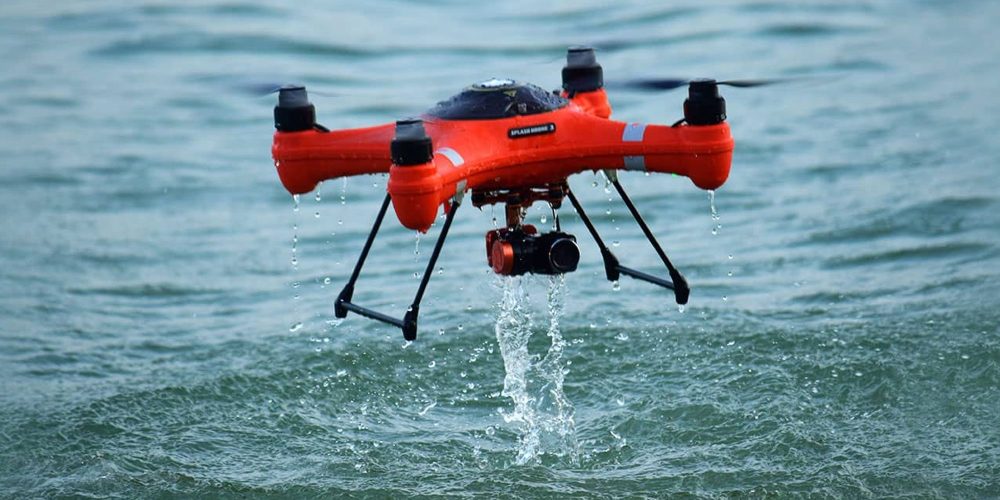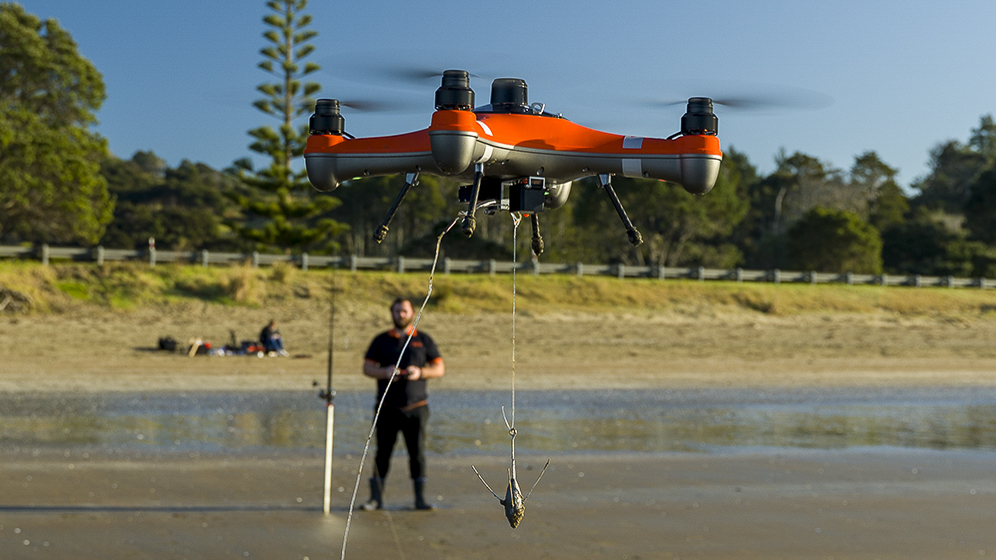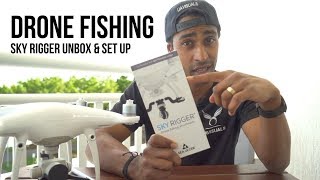
We will be looking at the basics and how to use a drone fishing rig. We'll also be discussing what to consider when choosing your drone, how to charge it, and the payload. Then, we'll discuss some ways you can get the most from your drone. For more tips and tricks, read on. You'll soon have the drone of your dreams! Let's begin !..., and maybe even catch a few fish.
Basic drone fishing gear
A good set of hooks is the most important thing when you want to begin drone fishing. The fishing line should not be more than twice the length. It should be mono- or braided. A Cat's Paw Loop or Uni knot should be tied to the fishing line. You will need a sinker that weighs between 2 and 8 ounces as well as hooks to attach to the second section. Finally, attach the lead loop of your snap swivel to your drone.
There are many ways you can create a fishing drone. One basic method involves attaching a hook on the drone's landing gear and spinning the line until it releases. A dropper to keep your fishing line under the drone is another option. A dropper allows you to keep the main line below the drone without getting tangled with the propellers. Fishing drones can be outfitted with accessories such as a dock or a battery pack.
Once you've purchased the basic drone fishing rig, you'll need to purchase some additional equipment. You will need a 700-meter fishing line and a bait dropper device. These are optional, but they will make drone fishing more fun. A good drone will allow you to see more of your surroundings and be able spot fish much easier.

Payload for drone fishing equipment
You need to know the safety precautions that must be taken if you plan to catch a fish with a drone. You should never fly your drone in strong winds or rain. Here are some guidelines to follow:
First, ensure your drone has a strong carrying capacity. You can't load it with heavy lures, braided or heavy line. Also, if you're fishing at a seaside location, the wind may blow the drone off its course. It is also important that you check your local laws and regulations, as some may not allow the use of drones for fishing. If you decide to fish with your drone, make sure it has a good carrying capacity.
Next is to determine what accessories you will need to mount to your drone. A good rule is to choose a rigging solution that has a central attach point in order to minimize weight distribution. The most suitable attachment points are the motor struts, landing gear, and legs of the drone. Avoid attaching payloads to your camera or gimbal, as they can be damaged. You can tie a fishing line running from one end of the camera to the opposite. To stop the line from falling out, you can attach tape to it.
Battery life of drone fishing equipment
Before you take off fishing with your drone, make sure to check all the gear and batteries. This will prevent your drone from running low on battery life, and you can focus on fishing instead. You may be able to charge your drones using solar panels or batteries from your car. Make sure your batteries are fully charged before you start. This will ensure your drone is ready for flight as soon as your reach your fishing spot.

You should also consider the drone's flight duration. Some models have longer flight times than others, but a drone that can fly for twenty-two minutes can easily get the job done. This is great if the drone can fly for hours on the water. However, a drone that is not able to sustain long distances will render it inoperable. This will make it almost impossible to catch fish.
Once you have set up the fishing rig and attached the fishing line clip or motor struts to it, Attach the bait and line to the drone. Make sure that you lock your reel before you fly your drone. Once you are ready, unlock it. When you take the line out, tension builds and the drone drops the bait in the water. The battery may not work properly if it isn't charged after each use.
FAQ
Can I fly my drone through my neighborhood?
Yes! These are known as UAVs (unmanned air vehicles). There are many types of drones on the market today, including small quadcopters and large fixed-wing aircraft. The FAA recently updated its rules regarding commercial UAV use. You can now legally fly them to business purposes. Be aware that UAVs operating near airports could cause interference to air traffic control systems. You must get permission from the authorities before you can fly one.
Flying with a drone?
Drones have become increasingly popular for commercial and personal purposes. They can be used for photography, filming and aerial mapping. The FAA has recently approved several new drone regulations, which include requirements for registration, licensing, pilot training, and insurance. These changes will help ensure that drones stay safe for all.
Can I fly my drone indoors
Yes, your drone can be flown indoors. It is important to make sure there are no hazards or obstacles in your home. For example, you should avoid flying near windows, doors, heating vents, air conditioning units, electrical outlets, water pipes, and fireplaces.
What type of batteries can a drone use to charge its batteries?
Most drones use lithium-ion batteries. The typical drone draws between 3 and 6 volts.
How high can you fly a drone without a license?
The FAA doesn't limit how high you can fly your drone. You will need to register your unmanned aircraft system (UAS), including the registration number and model name, weight, dimensions, serial number, manufacturer's number, date manufactured, and any other information.
Which drone is best for beginners?
One of the most popular beginner drones is the DJI Phantom 2 Vision+. The DJI Phantom 2 Vision+ comes with a 4K camera that allows you to capture high-quality aerial shots and videos. You can easily navigate this drone using its built-in GPS system.
Does the FAA regulate drones?
The FAA supervises all aspects related to drone operations, including certification requirements and safety standards.
Statistics
- Research and Markets predict a growth rate of 51.1% over the next five years. (thedroneu.com)
- According to Indeed, a drone pilot gets paid $25.73 per hour on average in the US. (dronesgator.com)
- According to the multiple listing service (MLS), houses and apartments with drone photographs are up to 68 percent more likely to sell than those without pictures. (thedroneu.com)
External Links
How To
How to Fly Drones with Beginners
A drone is a remotely-controlled aircraft that is used for aerial photography and surveillance. Drone technology has existed since World War II. DJI's Phantom quadcopters became commercially available in 2010. There have been many types of drones since then, including beginner-friendly drones like the Parrot AR Drone 2.0 and professional-grade multi-rotor crafts like the DJI Mavic Pro.
There are many methods to fly a Drone, including
-
Remote control – This is when you attach a device to your hand that allows you to control the drone's flight path. There are two main types, On/Off switches (like radios) and joysticks.
-
Manual Control – This allows remote operation of the drone via GPS coordinates using a smartphone application. Follow the instructions of the app to track the exact location you want the drone go.
-
Autonomous flight - The drone takes over the piloting duties. It allows the drone to fly independently without any human intervention. The drone must be equipped with a camera and sensors that can capture images and data in order to fly autonomously.
-
Triggered flight - This is similar to manual control except that the pilot sets up a preprogrammed route and the drone follows the route until it reaches its destination. After the program is complete, the drone automatically returns to the ground.
-
Landing Gear- Some drones include landing gear that allows for safe landing if the power goes out or they run out of batteries.
-
Goggles - Pilots may wear goggles to shield themselves from flying debris.
-
Camera - Certain drones come with cameras that allow you to take photos and videos from high above.
-
Obstacles: Some drones are equipped with obstacle avoidance systems to prevent them from hitting obstacles.
-
Speed - Some drones can reach speeds of over 40 mph.
-
Battery Life - Most drones are capable of lasting between 20 minutes and three hours, depending on the power that you use.
-
Range - Some drones can travel upto 30 miles depending on their models.
-
Power source - Some drones require an external power source; others work off internal batteries.
-
Weight - Some drones are lighter than others, while some models can weigh as much as 4 pounds.
-
Size - The size of drones varies from small, easily carried devices to more substantial crafts that weigh in excess of 50 pounds.
-
Price - From high-end models that cost thousands of dollars to low-cost options that start at $100, all drones fall under a certain price category.